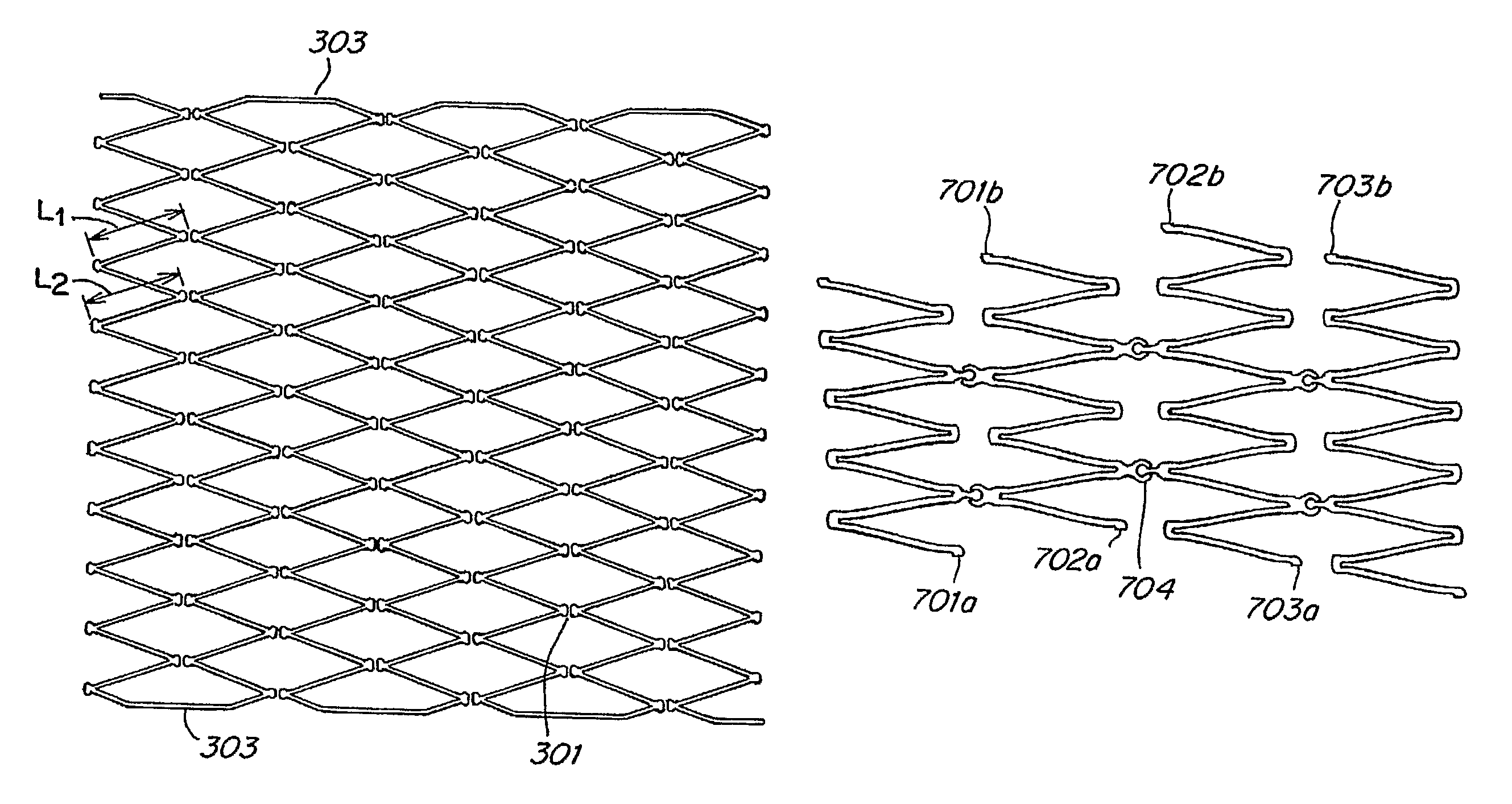Controlled fracture connections for stents
a technology of stents and connections, applied in the field of intraluminal stent design, can solve the problems of significant stress on the stent by loading conditions, and achieve the effects of improving flexibility, maintaining or improving the patency of the stent, and improving the resistance to fractur
- Summary
- Abstract
- Description
- Claims
- Application Information
AI Technical Summary
Benefits of technology
Problems solved by technology
Method used
Image
Examples
Embodiment Construction
[0016]The stents of the invention are designed comprising at least one controlled fracture location and, in certain embodiments, controlled timing of the fracture. As such, the connection design and materials are suitable to provide the stent with improved resistance to fatigue fractures at uncontrollable locations which can happen with stents presently in use. Fatigue fracture is a particular problem with stents deployed in tortuous vessels which stents are constantly subjected to torsion, twisting, bending and compression. Over time, the forces cause the stent to fatigue and break, sometime allowing jagged struts and end to pierce the adjacent vessel or hang into the lumen attracting thrombi. Such breakage can also compromise the support provided by the stent. Thus, the stents of the invention are designed to separate in such a manner so that when separation occurs the separation does not expose fragmented or jagged material and, importantly, the circumferential support provided b...
PUM
| Property | Measurement | Unit |
|---|---|---|
| thickness | aaaaa | aaaaa |
| width | aaaaa | aaaaa |
| circumference | aaaaa | aaaaa |
Abstract
Description
Claims
Application Information
 Login to View More
Login to View More - R&D
- Intellectual Property
- Life Sciences
- Materials
- Tech Scout
- Unparalleled Data Quality
- Higher Quality Content
- 60% Fewer Hallucinations
Browse by: Latest US Patents, China's latest patents, Technical Efficacy Thesaurus, Application Domain, Technology Topic, Popular Technical Reports.
© 2025 PatSnap. All rights reserved.Legal|Privacy policy|Modern Slavery Act Transparency Statement|Sitemap|About US| Contact US: help@patsnap.com



